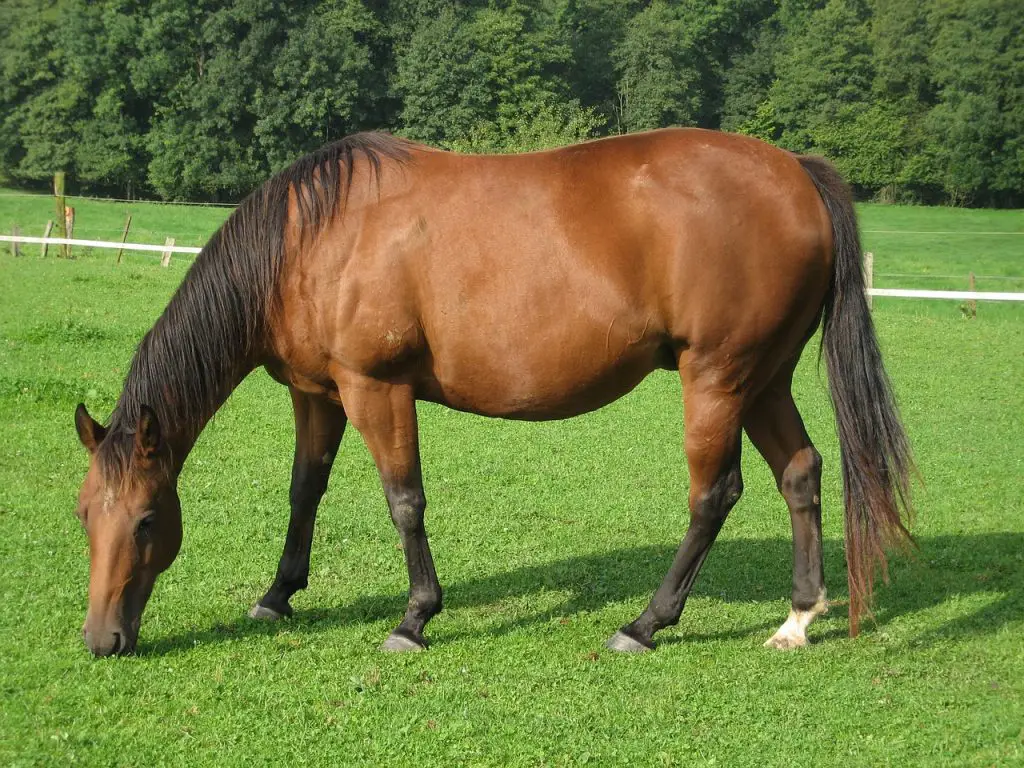Last Updated on March 15, 2022 by Allison Price
Although we don’t enjoy thinking about them, they are there. These parasites are a problem. They live in our paddocks, and eventually make their home in our horses. The anthelmintic is your match for parasites.
Deworming programs have been used for years to eradicate parasites from horses. This was not only unsustainable, but it was also counterproductive. Heute, deworming has three goals:
- To prevent the spread of clinical diseases, it is important to eliminate enough parasites
- Environmental contamination and parasite egg shedding can be controlled
- Keep the effectiveness of dewormers in place for the future
We are constantly evolving and learning. Sometimes what was once familiar is now new again. We revisit compounds that have made a significant impact on the management of intestinal parasites in horses. This includes how the compounds work in horses to eliminate the parasites. Fenbendazole is one such compound that has been around for over six decades and has stood the test.
Fighting at the cellular level The mode of action, or how a dewormer works, is crucial in determining its safety and efficacy. Fenbendazole fights at the cellular level to eliminate the threat and prevent it from causing problems for horses. Let’s find out how and why this is possible.
Microtubules are vital in many cellular processes. They are found inside the cells of parasites and animals. Fenbendazole interacts with microtubules in the worm when it is absorbed by them. Fenbendazole acts by binding to beta-tubulin in the microtubules, inhibiting their formation and causing cell division disruption. This powerful disruption stops the parasite from producing energy and starves it until it dies.

Fenbendazole is unique because it attracts parasite beta-tubulin more than the animal being treated. The parasite does not kill the animal’s cells. This is why the parasite is slowly eliminated and why fenbendazole can be used to deworm horses in many situations. It is safe for all horses, regardless of their age, size, or other body conditions. It is also safe for the environment, and other species.
Two of the most difficult parasite threats
Foals and weanlings are most concerned about ascarids. Adult horses are more at risk from small strongyles. Fenbendazole is unique in its ability to treat both.
Ascarids (roundworms).
Ascarids pose a double threat. The larvae can be ingested and then migrate through the small intestine walls to the liver. They eventually infiltrate the lungs, causing inflammation and poor thrift. The larvae in the lungs are swallowed, ingested and then passed to the small intestine where they mature into adults. Adult ascarids can grow up to 40 cm in length. Intestinal obstruction can lead to intestinal rupture or impaction colic, which can prove fatal.
Fenbendazole is a drug that targets adult ascarids in small intestines to stop the cycle of life. Fenbendazole’s powerful, but safe, mode of action is to starve the ascarid and cause it to die. It causes a slow death, which reduces the chance of side effects such as impactions or endotoxic shock. It is still highly effective. The second reason is that it remains highly effective. Ascarids worldwide are becoming resistant to ivermectin (moxidectin), pyrantel pamoate (pyrantel), and moxidectin (moxidectin). 3,4,5.6
Small strongyles from Encysted
Because they can encyst, small strongyles are a serious threat. The third stage of small strongyle larvae is ingested by the stomach. They then travel to the lower intestines where they burrow into the wall. The larvae might stop maturing at this point and hibernate (or encyst) for longer periods of time. 7 Encised larvae can remain in this stage for up to three years. 9 If they begin to develop again at the same time, usually due to seasonal influences, this can cause serious problems for horses and even death.
Panacur (r. POWERPAC), a larvicidal dose fenbendazole that can penetrate the mucosal walls and kill encysted larvae hiding in the mucosal wall, is the only dewormer to be proven effective at treating all stages of encysted small weakyles.
Fenbendazole does not quickly metabolize, so effective concentrations of the drug are maintained in the plasma and gut for a longer time. This increases its effectiveness against immature larvae and small strongyles. This is the base for the Panacur(r), POWERPAC five-dose regimen.
It has stood the test of time
Our approach to deworming horses has changed with the times. It is crucial to consult your veterinarian in order to develop deworming programs based on science. This will ensure that the antihelmintics we use can last the test of time. There is no single deworming regimen that works for all horses. You can gain a better understanding of the workings of anthelmintics like fenbendazole so that you are able to make the best decisions when deworming your horses.
Fenbendazole is extremely safe because of its unique mode of action. It can be used to control two of the most significant parasites that threaten horses. Fenbendazole and other dewormers have the best chances of success when they are used in conjunction with fecal monitoring, strategic use of non-chemical parasite control strategies, and fecal monitoring.
Panacur(r), which is a veterinary supplement, can be taken a closer look and discussed with your vet. Visit www.Science-of-Effective.com for more information.
Ask your veterinarian for help in diagnosing, treating, and controlling parasitism.
Use only in horses not intended for human consumption. Use Panacur(r), (fenbendazole paste 10%) concomitantly or in conjunction with trichlorfon. Refer to the label for instructions and warnings.



